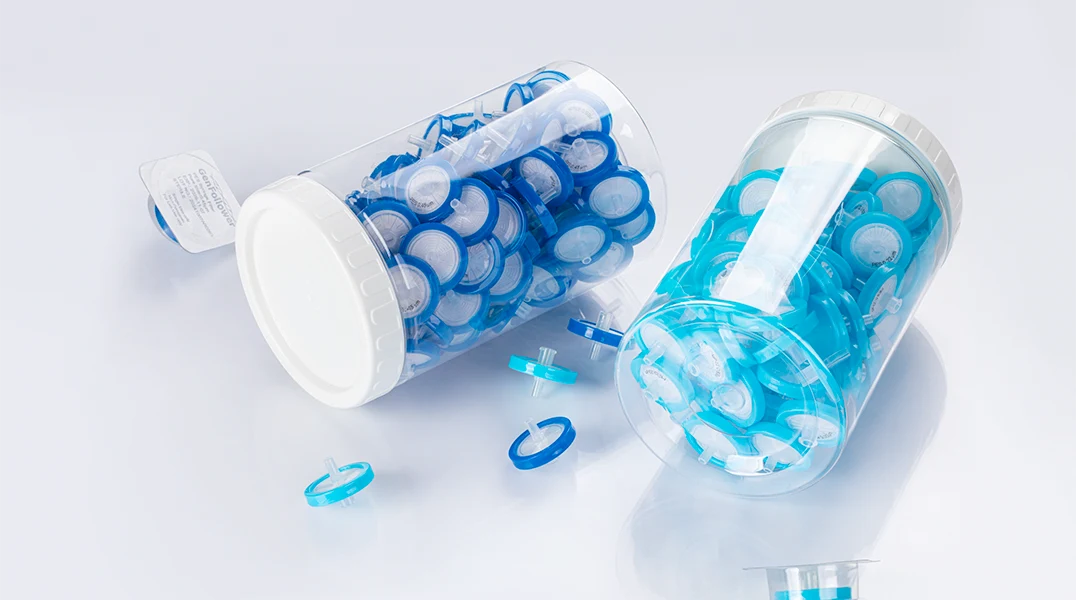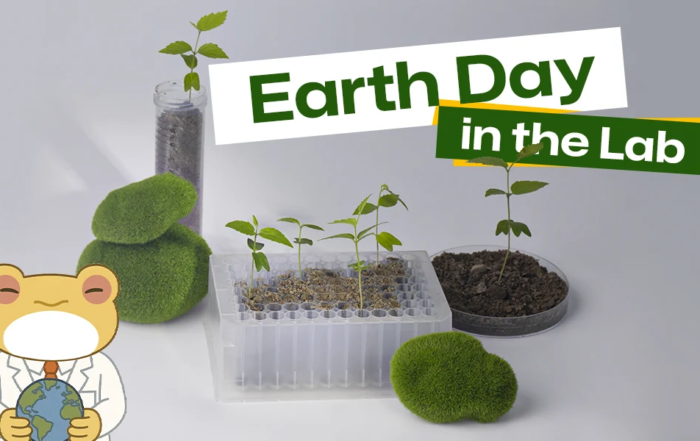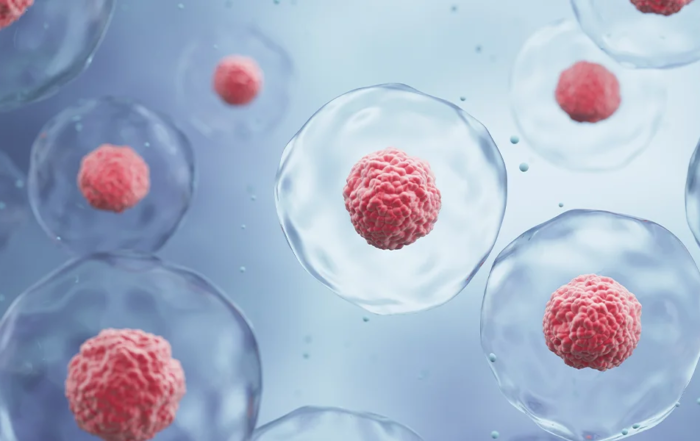Table of Content
- What are Syringe Filters
- How 0.22 / 0.45 Micron Filters Work
- Where can 0.22um and 0.45um Filters be used
- What substances can 0.22µm and 0.45µm Filters filter
- How to Use 0.22 Micron and 0.45 Micron Filters Effectively
- How to Choose the Right 0.22/0.45 Micron Filter
- Can 0.22µm and 0.45µm filters remove viruses
- Why is my filter clogging so quickly
- How should I store unused filters
- Can I reuse 0.22µm or 0.45µm filters
- How do I prevent air bubbles during filtration?
- What is the maximum operating pressure for these filters
- Do 0.22µm and 0.45µm filters work with both liquids and gases
- How do I troubleshoot inconsistent flow rates
- Conclusion
Filtration plays a critical role in ensuring the purity and reliability of solutions across industries, from pharmaceuticals to environmental testing. Among the most widely used filtration tools are 0.22µm and 0.45µm filters, known for their precision and versatility. This guide delves into their working principles, applications, and key factors for selection, providing you with the insights needed to make informed decisions and optimize your filtration processes.
What are Syringe Filters
Syringe filters are single-use, membrane-based filtration devices designed to remove particulates, microorganisms, or other impurities from liquids and gases. It consists of a plastic housing that encases a filter membrane with specific pore sizes, typically ranging from 0.1 µm to 5 µm, depending on the application. The device is attached to the tip of a syringe, allowing liquid or gas to be pushed through the membrane under pressure.
How 0.22 / 0.45 Micron Filters Work
Both 0.22 µm and 0.45 µm filters operate using the same filtration mechanism.
The 0.22µm and 0.45µm filters operate on the principle of size-based microfiltration, a process that physically retains particles, microorganisms, and other impurities larger than the membrane’s pore size. The mechanism can be broadly divided into two filtration modes:
Surface Filtration: In this process, the filter membrane acts as a barrier, trapping contaminants directly on its surface. Particles that are larger than the membrane pores cannot pass through and accumulate on the surface over time. This is the dominant mechanism in syringe filters, ensuring a consistent pore size-based separation.
Depth Filtration (Limited): Some filter membranes, depending on their material and structure, may allow particles to be trapped within the layers of the membrane, especially for those near the cutoff size. This provides an additional layer of filtration but is less common for 0.22µm and 0.45µm syringe filters, which primarily use surface filtration for precise particle separation.
The filtration capability of syringe filters depends on these key factors.
Pore Size: The pore size of the filter is critical to its functionality. A 0.22µm filter can remove most bacteria and some viruses, making it ideal for sterile filtration. In contrast, a 0.45µm filter is better suited for removing particulates and larger contaminants but does not guarantee sterility.
Membrane Material: Filters are made from materials such as polyethersulfone (PES), polyvinylidene fluoride (PVDF), nylon, and polytetrafluoroethylene (PTFE). These materials are chosen based on their compatibility with different liquids and chemicals. For example, PES is low protein-binding and ideal for biological solutions, while PTFE is highly chemical-resistant and used for organic solvents.
Pressure-Driven Filtration: The filtration process relies on applying pressure, typically from a syringe, to push the liquid through the filter membrane. The applied pressure forces liquid through the pores, allowing particles smaller than the pore size to pass while retaining larger impurities. Proper pressure ensures efficient filtration while preventing membrane damage.
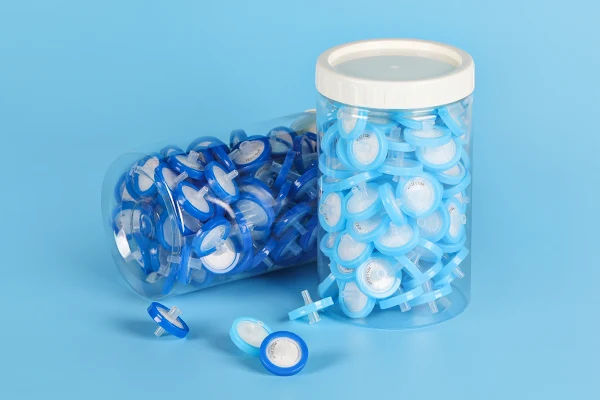
Where can 0.22um and 0.45um Filters be used
The 0.22µm and 0.45µm filters are essential tools in various industries, laboratories, and research facilities. Their ability to remove contaminants based on pore size makes them indispensable for sterilization, clarification, and protection of downstream systems. Below are the primary applications of these filters:
Laboratory Applications
Sterile Filtration (0.22µm): Removes bacteria and other microorganisms from liquid media, buffers, and reagents to ensure sterility. Commonly used in cell culture work, vaccine preparation, and protein solutions.
Sample Clarification (0.45µm): Removes particulates and large debris to prevent interference in analytical techniques such as high-performance liquid chromatography (HPLC) or gas chromatography (GC). Ensures accurate analytical results by protecting sensitive instruments from clogging or contamination.
Pharmaceutical Industry
Production of Sterile Products (0.22µm): Essential for ensuring sterility in injectable drugs, ophthalmic solutions, and intravenous fluids. Used in the filtration of vaccine components and biologics to comply with regulatory requirements.
Clarification of Ingredients (0.45µm): Removes undissolved particles from raw materials and excipients before mixing or further processing.
Water and Environmental Testing
Water Sterilization (0.22µm): Filters microorganisms from water samples for microbiological testing and sterility validation. Ensures that water used in sensitive processes is free from bacterial contamination.
Particle Removal (0.45µm): Removes larger impurities from water samples for chemical and environmental analysis. Helps in assessing water quality by eliminating turbidity-causing particles.
Food and Beverage Industry
Microbial Filtration (0.22µm): Ensures the removal of bacteria and other contaminants from liquid food products such as juices, syrups, and beverages. Maintains product sterility without altering taste or nutritional content.
Clarification (0.45µm): Removes visible particles and sediments to improve the appearance and texture of liquid food products.
Biotechnology and Life Sciences
Sterilization of Sensitive Solutions (0.22µm): Used in the preparation of DNA, RNA, and protein samples to avoid contamination. Ensures sterility in culture media and other reagents used in molecular biology experiments.
Clarification of Suspensions (0.45µm): Removes cell debris and particulate matter from lysates or fermentation broths.
Industrial Applications
Process Filtration (0.22µm): Used in electronics and semiconductor manufacturing to filter ultrapure water and chemicals.
Pre-Filtration (0.45µm): Protects high-precision filtration systems by removing larger particulates in industrial workflows.
By selecting the appropriate pore size, 0.22µm and 0.45µm filters can fulfill a wide range of applications, ensuring sterility, clarity, and quality across diverse fields.
What substances can 0.22µm and 0.45µm Filters filter
To better understand the capabilities of 0.22µm and 0.45µm filters, the following sections provide a detailed breakdown of the substances they can effectively filter and those they cannot or filter only to a limited extent.
Substances Filtered by 0.22µm Filters
Effectively Filtered Substances
1. Bacteria
Pseudomonas aeruginosa: Typically 1.5–3µm long and about 0.5–1µm wide, making it easily retained by the 0.22µm filter.
Escherichia coli: Rod-shaped bacteria with sizes ranging from 1–3µm in length and 0.4–0.7µm in diameter.
Bacterial Spores: Dormant and highly resistant forms of bacteria, such as Bacillus subtilis spores, have sizes similar to or slightly smaller than vegetative cells (0.8–1.2µm), ensuring efficient retention by 0.22µm filters.
2. Yeast and Small Fungi
Yeast cells, such as Saccharomyces cerevisiae, typically range from 3–5µm in size, far exceeding the pore size of the filter.
Fine Particles: Removes fine particulates and debris down to 0.22µm, providing sterile, clear filtrates.
Limited or Ineffective Filtration
1. Viruses
Most viruses, such as Influenza A (80–120nm) and SARS-CoV-2 (approximately 100nm), are much smaller than the filter pore size and cannot be effectively retained.
2. Mycoplasma
These cell-wall-deficient microorganisms are typically 0.1–0.3µm in size, which may allow some species to pass through. Specialized filters are recommended for complete removal.
Dissolved Substances
Ions, salts, sugars, and other solutes are unaffected, as they pass through the filter pores with the liquid.
Substances Filtered by 0.45µm Filters
Effectively Filtered Substances
1. Larger Bacteria
Bacillus subtilis: Rod-shaped bacteria approximately 0.8–1.2µm in size are efficiently retained.
Staphylococcus aureus: Spherical bacteria with a diameter of 0.8–1.0µm can also be removed by 0.45µm filters.
2. Larger Yeasts and Fungi
Fungal spores (Aspergillus species) and larger yeast cells exceeding 0.45µm are captured, ensuring sample clarity.
3. Visible Particles and Debris
Removes large particulates, sediments, and aggregated substances from liquids, making it suitable for sample clarification.
Limited or Ineffective Filtration
1. Smaller Bacteria
Bacteria such as Pseudomonas aeruginosa and Escherichia coli may pass through due to their smaller size compared to the 0.45µm pore size.
2. Viruses
Ineffective against all viruses, as their size is significantly smaller than the filter’s pore size.
3. Submicron Particles
Nanoparticles and fine colloids below 0.45µm are not removed.
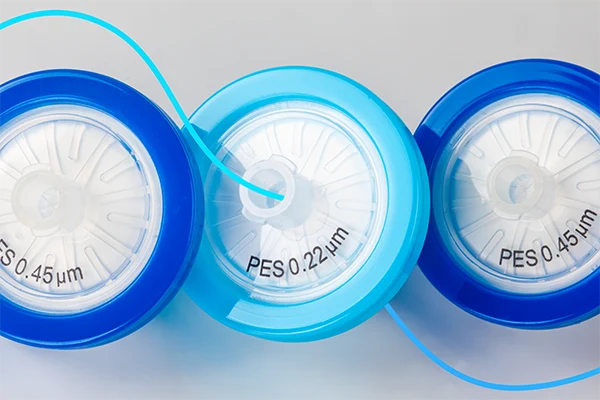
How to Use 0.22 Micron and 0.45 Micron Filters Effectively
Proper use of 0.22µm and 0.45µm filters ensures optimal performance, prolonged filter life, and consistent results. Follow these guidelines for effective filtration:
1. Pre-Wetting Hydrophilic Filters
Hydrophilic filters, such as those made of PVDF, PES, or nylon, should be pre-wet when filtering aqueous solutions.
Pre-wetting ensures the filter membrane is fully saturated, preventing air bubbles and facilitating an even flow rate.
Use a small volume of the liquid you plan to filter (e.g., water or buffer) to wet the membrane before starting the main filtration process.
2. Pre-Filtering to Avoid Clogging
High particle concentrations in samples can lead to clogging and reduce the efficiency of the filter.
To avoid clogging:
For 0.22µm filters: Pre-filter the solution using a 0.45µm or 1.0µm filter to remove larger particles.
For 0.45µm filters: Pre-filter using a filter with a pore size of 1.0µm or larger.
Pre-filtration minimizes the load on the finer filter, increasing its lifespan and maintaining a steady flow rate.
3. Controlling Flow Rate and Pressure
Apply consistent and gentle pressure to ensure uniform filtration and prevent damage to the filter membrane.
Avoid excessive pressure, as this can lead to:
Uneven filtration; Rupture of the membrane; Reduced filtration accuracy.
For syringe filters, avoid forcing the plunger too quickly, as this may compromise filtration quality.
4. Ensuring Compatibility
Select a filter membrane material compatible with your sample’s chemical properties:
Hydrophilic membranes (e.g., PES, PVDF, Nylon): Ideal for aqueous solutions.
Hydrophobic membranes (e.g., PTFE): Suitable for organic solvents and aggressive chemicals.
Compatibility prevents membrane degradation or unwanted chemical reactions during filtration.
5. Monitoring Filtration Performance
Inspect the filter during use for signs of clogging, reduced flow, or backpressure.
Replace the filter promptly if the flow rate drops significantly, as continued use may lead to incomplete filtration or membrane failure.
6. Proper Handling and Disposal
Handle the filter with care to avoid contamination. Always wear gloves when installing or replacing filters.
After use, dispose of filters according to local regulations, especially if filtering biohazardous or chemical waste.
7. Storage and Maintenance
Store filters in a clean and dry environment to prevent contamination.
If pre-wet filters are not used immediately, keep them in a sealed bag or container to maintain moisture and avoid drying out the membrane.
How to Choose the Right 0.22/0.45 Micron Filter
1. Assess Chemical Compatibility
Ensure the filter membrane material is compatible with your sample to prevent degradation or contamination.
PTFE: Highly resistant to aggressive chemicals, organic solvents, and strong acids.
PVDF: Suitable for both aqueous solutions and organic solvents; ideal for protein filtration due to low protein binding.
PES: Excellent for biological fluids and aqueous solutions due to its low extractables and high flow rate.
Nylon: Works well with aqueous and organic mixtures but is sensitive to strong acids.
Regenerated Cellulose: Ideal for filtering both aqueous solutions and low-concentration organic solvents.
Consult the manufacturer’s compatibility chart for the specific chemical composition of your sample.
2. Choose the Appropriate Filtration Mode
Select the filtration device based on your sample volume and application.
Syringe Filters: Best for filtering small volumes (typically under 100mL) in laboratory-scale experiments.
Disc Filters: Suitable for medium volumes in analytical or preparative processes.
Capsule Filters: Ideal for high-volume applications in industrial settings, such as large-scale media filtration.
Inline Filters: Designed for continuous systems, like bioprocessing or chemical production.
For high-throughput needs, consider using filters with larger surface areas to enhance efficiency and reduce processing time.
3. Match the Filter to Your Application Needs
Tailor your filter choice to the specific purpose.
Sterile Filtration: Use 0.22µm filters for applications requiring sterility, such as pharmaceutical production, sterile media preparation, or IV solution filtration.
Particle Removal: Select 0.45µm filters for applications such as water testing, environmental monitoring, or pre-filtration to remove larger particles.
HPLC Sample Preparation: Use either filter type depending on the particle size in your sample to prevent clogging of analytical equipment.
Air and Gas Filtration: PTFE membranes in 0.22µm filters are suitable for sterilizing compressed air or filtering aggressive gas mixtures.
4. Evaluate Flow Rate and Pressure Requirements
Flow Rate: Choose a filter with a material that supports your required flow rate.
PES and Nylon membranes typically offer high flow rates, making them suitable for high-throughput needs.
PTFE membranes generally have slower flow rates but are necessary for chemically aggressive samples.
Operating Pressure: Verify the filter’s maximum pressure rating to ensure it can handle your filtration system.
For syringe filters, use gentle and even pressure to avoid rupturing the membrane.
Industrial setups should use capsule or inline filters that can withstand sustained high-pressure conditions.
5. Incorporate Pre-Filtration to Prevent Clogging
To avoid premature clogging of fine-pore filters, use a pre-filter to capture larger particles.
For turbid or particulate-laden samples, start with a 1.0µm or 0.8µm filter before moving to 0.22µm or 0.45µm filters.
Layered filtration systems (e.g., stacking multiple pore sizes in sequence) improve longevity and performance of the finer filter.
For especially dirty samples, consider centrifuging or settling the solution beforehand to reduce particulate load.
6. Check Certification and Standards
Look for filters certified for your specific industry to ensure quality and reliability.
Pharmaceutical Applications: Filters should comply with USP Class VI standards for biocompatibility.
Food and Beverage: Ensure the filter is FDA-compliant and free from harmful extractables.
Sterile Filtration: Choose filters that are individually integrity-tested and validated for microbial retention.
7. Optimize Performance and Cost
Evaluate the balance between performance and expense for your application.
For routine tasks, a 0.45µm filter is often more economical and sufficient.
For critical tasks like sterile filtration or working with high-value samples, invest in 0.22µm filters with robust membrane integrity and high chemical resistance.
Minimize waste by selecting the correct filter size for your volume:
Small volumes benefit from syringe filters, while larger setups may justify the use of disc or capsule filters for cost efficiency.
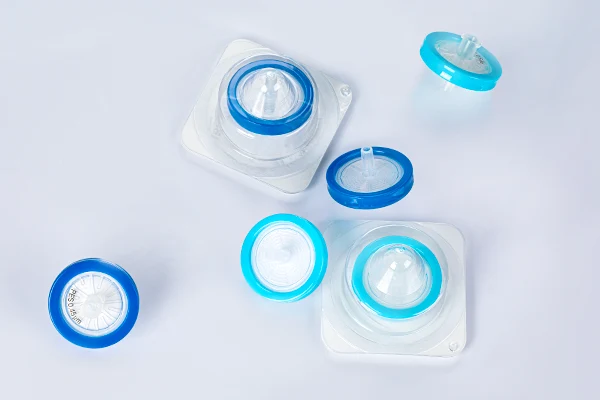
Can 0.22µm and 0.45µm filters remove viruses
No, neither filter is effective at removing viruses due to their small size, typically ranging from 0.02µm to 0.3µm. Specialized ultrafiltration or nanofiltration membranes with smaller pore sizes are required to retain viruses.
Why is my filter clogging so quickly
Rapid clogging may occur due to:
High levels of particulates in the sample. Solution: Use a pre-filter with a larger pore size (e.g., 1.0µm) before fine filtration.
Excessive flow rate or pressure. Solution: Apply gentle and consistent pressure to avoid overloading the filter.
Inadequate cleaning of reusable filters (if applicable).
How should I store unused filters
Dry Storage: Keep filters in their original sealed packaging in a cool, dry environment.
Pre-Wetted Filters: If pre-wetted, store them in a sterile saline or alcohol solution to maintain sterility and prevent drying.
Can I reuse 0.22µm or 0.45µm filters
Syringe Filters: Designed for single use to avoid cross-contamination.
Reusable Filters: Certain disc or capsule filters can be reused if cleaned thoroughly and autoclaved, depending on the material and application. Always check the manufacturer’s guidelines.
How do I prevent air bubbles during filtration?
Pre-wet hydrophilic filters (e.g., PVDF) before use to ensure smooth liquid flow.
For syringe filters, expel air from the syringe before attaching the filter.
What is the maximum operating pressure for these filters
The maximum pressure varies by filter type and material:
Syringe Filters: Typically withstand up to 75 psi (5 bar). Syringe filters from GenFollower can withstand up to 87 psi (6 bar).
Disc Filters and Capsule Filters: Often handle higher pressures, up to 100 psi (6.9 bar) or more. Check the manufacturer’s specifications for precise limits.
Do 0.22µm and 0.45µm filters work with both liquids and gases
Yes, both filter types can be used for liquid and gas filtration:
For liquids: Ensure the filter material is compatible with the solvent.
For gases: Use hydrophobic membranes like PTFE to filter air or other gases without retaining moisture.
How do I troubleshoot inconsistent flow rates
If you experience inconsistent or reduced flow rates:
Check for clogging and replace the filter if necessary.
Verify that the filter is fully wetted for optimal performance.
Ensure that the sample is pre-filtered if it contains a high particulate load.
Conclusion
0.22µm and 0.45µm filters are indispensable for achieving effective and reliable filtration across diverse applications. By understanding their working principles, specific use cases, and selection criteria, you can ensure optimal performance tailored to your unique requirements, whether for sterile filtration, particle removal, or general laboratory tasks.
At GenFollower, we are committed to providing high-quality, sustainable, and efficient laboratory plastic consumables, including syringe filters designed to enhance your filtration experience. Explore our website to discover our product range, and feel free to contact us for expert advice or tailored solutions to meet your needs.
Recent Posts
Step-by-Step ELISA Protocol: A Comprehensive Guide
What is ELISA? ELISA (Enzyme-Linked Immunosorbent Assay) is a widely used laboratory technique designed to detect and quantify specific soluble molecules — such as proteins, peptides, antibodies, hormones, and biomarkers (e.g., cytokines, chemokines, immunoglobulins) — [...]
Earth Day in the Lab: GenFollower’s Eco‑Driven Innovations for Sustainable Science
What is Earth Day? Earth Day began in the United States in the early 1970s, when a burgeoning environmental movement on college campuses sought to awaken public consciousness towards the fragility of our planet. [...]
What is Cell Therapy Manufacturing?Essentials and manufacturing processes for cell therapies
Cell therapy is rewriting the rules of modern medicine. Imagine a treatment that uses a patient’s own immune cells, reprogrammed in a lab to hunt down and destroy cancer—this is no longer science fiction [...]
